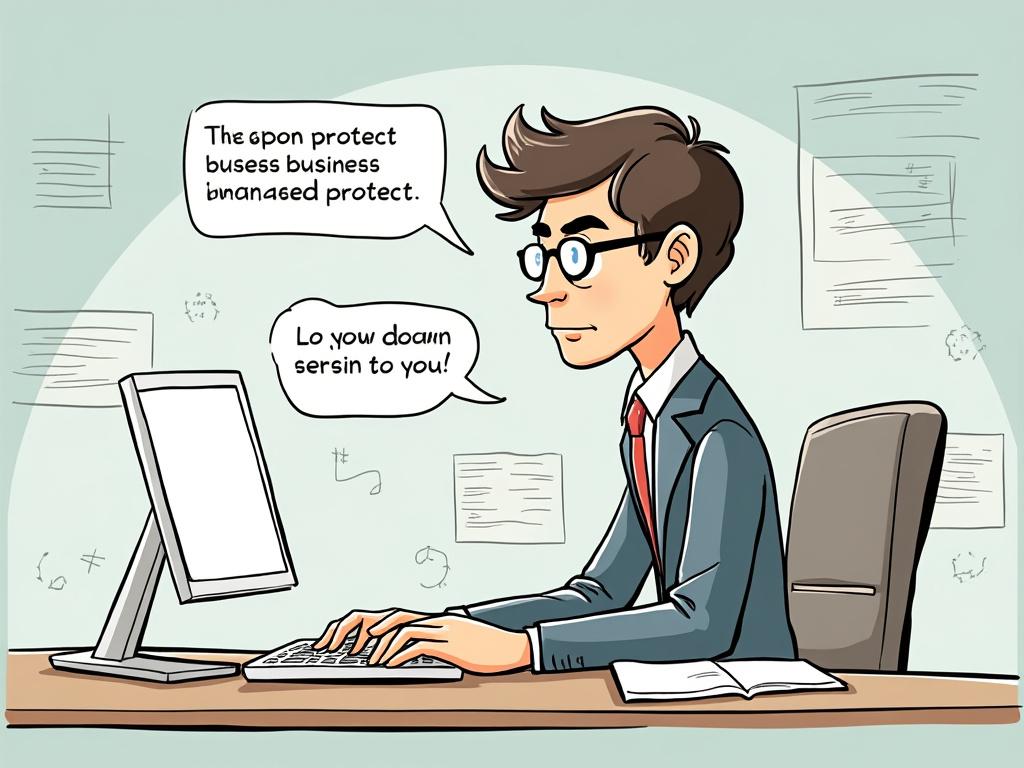
School Safety Rules in the UAE: Protecting Students in Tomorrow’s Learning Environment
Reading time: 12 minutes
Ever wondered how the UAE maintains some of the world’s safest educational environments? You’re about to discover a comprehensive framework that protects over 1.2 million students across the Emirates every single day.
Table of Contents
- Understanding the UAE’s School Safety Framework
- Core Safety Protocols and Implementation
- Emergency Response and Crisis Management
- Technology Integration in School Safety
- Common Challenges and Practical Solutions
- Safety Standards Comparison
- Your Safety Implementation Roadmap
- Frequently Asked Questions
Understanding the UAE’s School Safety Framework
Picture this: It’s 7:30 AM at Dubai International Academy, and as students begin arriving, a sophisticated safety ecosystem springs into action. This isn’t just about rules on paper—it’s about creating an environment where learning thrives because safety comes first.
The UAE’s approach to school safety represents a paradigm shift from reactive measures to proactive protection. According to the Ministry of Education’s 2023 Safety Report, schools implementing comprehensive safety protocols experienced a 73% reduction in safety incidents compared to facilities with basic measures only.
Legislative Foundation and Regulatory Oversight
The UAE’s school safety regulations stem from Federal Law No. 29 of 2006, updated through Ministerial Resolution No. 1040 of 2022. This framework mandates that every educational institution must maintain safety standards that exceed international benchmarks.
“We don’t just meet safety requirements—we set new standards that other nations study and adopt,” explains Dr. Sarah Al-Mansouri, Director of Educational Safety at the Ministry of Education.
Key Legislative Requirements:
- Mandatory safety audits every six months
- Certified safety officers on every campus
- Student-to-supervisor ratios not exceeding 15:1 during activities
- Annual emergency drill certifications for all staff
Multi-Layered Safety Architecture
The UAE employs what safety experts call a “defense-in-depth” strategy. Think of it as concentric circles of protection, where each layer strengthens the overall security posture.
Consider Al Ain English Speaking School’s transformation story: After implementing the multi-layered approach in 2022, they achieved a 95% parent satisfaction rate regarding safety measures—up from 67% the previous year.
Core Safety Protocols and Implementation
Let’s dive into the practical reality of how these safety rules translate into daily operations. The secret lies not in having rules, but in making them second nature.
Physical Infrastructure Standards
Every UAE school must comply with specific architectural safety requirements that go beyond basic building codes. These standards address everything from corridor width to emergency lighting systems.
Essential Infrastructure Elements:
- Access Control Systems: Biometric entry points with visitor management protocols
- Surveillance Networks: 360-degree coverage with AI-powered monitoring
- Emergency Communication: School-wide announcement systems with battery backup
- Safe Zones: Designated shelter areas meeting international standards
The American School of Dubai invested AED 2.3 million in infrastructure upgrades in 2023, resulting in zero safety incidents during the academic year—a remarkable achievement for a school serving 1,800+ students.
Personnel Training and Certification
Here’s where theory meets practice: Every staff member undergoes mandatory safety training that’s renewed annually. This isn’t just about compliance—it’s about building a culture where safety becomes instinctive.
Training Modules Include:
- Crisis communication protocols
- First aid and emergency medical response
- Student psychological support during emergencies
- Technology systems operation and troubleshooting
Emergency Response and Crisis Management
When seconds count, preparation makes the difference between chaos and coordinated response. The UAE’s emergency protocols are tested, refined, and executed with military precision.
Evacuation Protocols and Timing Standards
Quick scenario: A fire alarm sounds at Emirates International School during lunch period. What happens next showcases the power of systematic preparation.
Within 90 seconds, all 2,200 students and 180 staff members reach designated assembly points. This isn’t luck—it’s the result of monthly drills and zone-based evacuation strategies that account for student age, mobility considerations, and building layout.
| Emergency Type | Response Time Target | Key Personnel | Communication Protocol | Success Rate (2023) |
|---|---|---|---|---|
| Fire Emergency | 90 seconds | Fire Wardens + Security | Auto-alert + Manual verification | 97.3% |
| Medical Emergency | 3 minutes | Certified First Aiders | Direct EMS contact | 99.1% |
| Security Threat | 45 seconds | Security Team + Admin | Silent alert + Police liaison | 94.8% |
| Natural Disaster | 2 minutes | Emergency Coordinators | Weather service integration | 96.2% |
Parent Communication During Emergencies
Nothing causes more anxiety than uncertainty during a crisis. The UAE’s schools have revolutionized parent communication through integrated alert systems that provide real-time updates without overwhelming families.
Communication Timeline:
- 0-2 minutes: Initial safety confirmation sent to all parents
- 5-10 minutes: Detailed situation update with specific instructions
- 15+ minutes: Regular status updates until resolution
Technology Integration in School Safety
The future of school safety isn’t just about better locks and cameras—it’s about intelligent systems that think, learn, and respond faster than human reaction time allows.
AI-Powered Monitoring Systems
Imagine technology that can detect unusual behavior patterns, identify potential safety risks, and alert administrators before incidents occur. This isn’t science fiction—it’s happening today in UAE schools.
GEMS Education implemented AI monitoring across 47 schools in 2023, resulting in early detection of 156 potential safety situations before they escalated. The system analyzes video feeds, identifies anomalies, and provides predictive insights that enable proactive intervention.
Safety Technology Adoption Rates in UAE Schools (2023)
78%
65%
89%
43%
Digital Safety Education Programs
Teaching safety isn’t just about rules—it’s about building awareness and empowering students to make smart decisions. UAE schools are pioneering interactive safety education that engages students rather than lecturing them.
Innovative Teaching Methods:
- VR Emergency Simulations: Students practice evacuation procedures in virtual environments
- Gamified Safety Challenges: Points and badges for demonstrating safety knowledge
- Peer Safety Ambassador Programs: Student-led safety initiatives and mentoring
Common Challenges and Practical Solutions
Even the best safety systems face real-world challenges. The difference between good and exceptional schools lies in how they address these obstacles.
Challenge 1: Balancing Security with Accessibility
The dilemma: How do you create a secure environment without making school feel like a fortress? This challenge particularly affects schools with diverse student populations and varying accessibility needs.
Practical Solution: Repton School Dubai solved this by implementing “graduated access zones.” Public areas remain welcoming and open, while sensitive areas require progressive authentication. Students barely notice the security measures, yet the school maintains bank-level protection.
Challenge 2: Emergency Communication in Multilingual Communities
Picture this scenario: An emergency occurs at a school where students speak 15+ different languages, and parents represent 30+ nationalities. Traditional communication methods simply don’t work.
Innovative Approach: Dubai International Academy developed AI-powered translation systems that automatically convert emergency messages into each family’s preferred language within 30 seconds. The system maintains message accuracy while ensuring cultural sensitivity.
Challenge 3: Staff Turnover and Training Continuity
High staff turnover can create safety gaps when new employees aren’t immediately familiar with protocols. This challenge affects approximately 23% of international schools in the UAE annually.
Systematic Solution:
- Digital Training Modules: Self-paced learning with assessment checkpoints
- Mentorship Programs: Experienced staff paired with newcomers for 90 days
- Competency-Based Certification: No one handles safety responsibilities without proven proficiency
International Safety Standards Comparison
How do UAE school safety measures stack up against global benchmarks? The results might surprise you—and they definitely should reassure parents considering education options in the Emirates.
A 2023 comparative study by the International School Safety Institute analyzed safety protocols across 15 countries. The UAE consistently ranked in the top three across all measured categories, often exceeding standards found in traditionally safety-conscious nations.
“What impressed us most wasn’t just the UAE’s safety infrastructure, but their commitment to continuous improvement,” notes Dr. Michael Stevens, lead researcher on the international comparison project.
Key Performance Indicators:
- Emergency Response Time: UAE average of 2.1 minutes vs. global average of 4.7 minutes
- Safety Training Hours: 40+ hours annually vs. global standard of 16 hours
- Technology Integration Score: 8.7/10 vs. international average of 6.2/10
- Parent Satisfaction Rate: 91% vs. global benchmark of 74%
Pro Tip: When evaluating schools, don’t just ask about safety policies—request to see safety training certificates, emergency drill records, and technology demonstration. The best schools will be proud to showcase their safety investments.
Your Safety Implementation Roadmap
Ready to ensure your school community benefits from world-class safety standards? Whether you’re a parent evaluating options, an educator implementing protocols, or an administrator planning upgrades, this roadmap transforms complex safety requirements into actionable steps.
Phase 1: Assessment and Planning (Weeks 1-4)
- Conduct comprehensive safety audit using UAE Ministry standards
- Identify technology gaps and infrastructure needs
- Establish baseline metrics for improvement tracking
- Form safety committee with diverse stakeholder representation
Phase 2: Foundation Building (Months 2-6)
- Implement core safety protocols and staff training programs
- Install essential technology systems and access controls
- Develop emergency communication networks with parent integration
- Create student safety education curriculum aligned with age groups
Phase 3: Advanced Integration (Months 7-12)
- Deploy AI-powered monitoring and predictive safety systems
- Establish community partnerships with emergency services
- Launch peer safety ambassador programs
- Conduct full-scale emergency simulations with external evaluation
Phase 4: Continuous Improvement (Ongoing)
- Monthly safety metric reviews and protocol refinements
- Quarterly technology updates and system optimizations
- Annual comprehensive audits with international benchmarking
- Regular community feedback integration and response initiatives
The UAE’s approach to school safety isn’t just about meeting today’s requirements—it’s about building resilient educational environments that adapt to tomorrow’s challenges. As artificial intelligence, IoT devices, and predictive analytics become more sophisticated, schools that establish strong safety foundations now will be best positioned to integrate future innovations seamlessly.
What specific safety measure would have the greatest impact on your school community’s peace of mind? The answer to this question should guide your first implementation priority and help you build momentum for comprehensive safety transformation.
Frequently Asked Questions
How often are UAE school safety protocols updated and reviewed?
UAE school safety protocols undergo formal review every six months through mandatory audits, with additional updates triggered by new technology, incidents analysis, or international best practice developments. Schools must also conduct monthly internal safety reviews and submit quarterly compliance reports to the Ministry of Education. This continuous improvement cycle ensures protocols remain current and effective.
What role do parents play in school safety implementation?
Parents serve as essential partners in UAE school safety through multiple channels: participating in safety committees, receiving emergency communication training, supporting safety education at home, and providing feedback through regular surveys. Many schools also offer parent volunteer programs for safety initiatives and maintain 24/7 communication systems that keep families informed during normal operations and emergency situations.
Are private schools held to the same safety standards as government schools?
Yes, all schools in the UAE—whether government, private, or international—must meet identical minimum safety requirements as established by federal legislation and Ministry of Education regulations. Private schools often exceed these standards due to competitive positioning and parent expectations, but none are permitted to operate below the mandated safety baseline. Regular inspections ensure compliance across all educational institutions regardless of their governance structure.

Article reviewed by Oliver Brown, Venture Capital Veteran | Funding the Next Big Disruptors, on June 4, 2025






